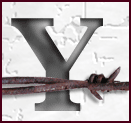



 How often when we talk about genocide, in World War II or
in Bosnia or Rwanda today, do we acknowledge that our
country, the United States of America (under the same Constitution, with its Bill of
Rights, that we honor today), was founded on genocide?
How often when we talk about genocide, in World War II or
in Bosnia or Rwanda today, do we acknowledge that our
country, the United States of America (under the same Constitution, with its Bill of
Rights, that we honor today), was founded on genocide?The following is an eyewitness account of the Sand Creek massacre of 1864, when 105 Cheyenne women and children were mutilated and murdered by U.S. troops under Colonel J.M. Chivington:
There seemed to be indiscriminate slaughter of men, women, children. There were some thirty or forty squaws collected in a hole for protection; they sent out a little girl about six years old with a white flag on a stick; she had not proceeded but a few steps when she was shot and killed. All the squaws in that hole were afterward killed, and four or five bucks outside. The squaws offered no resistance. Everyone I saw dead was scalped. I saw one squaw cut open with an unborn child, as I thought, lying by her side....I saw quite a number of infants in arms killed with their mothers.
Another witness:
I also heard of numerous instances in which men had cut out the private parts of females and stretched them over the saddle-bows and wore them over their hats while riding in the ranks.
Colonel Chivington, at a speech not long before the massacre, advocated the killing and scalping of all Indians, even infants: "Nits make lice!"
Source: Dee Brown, Bury My Heart at Wounded Knee (Washington Square Press, 1981), pp. 88-89.
The villagers resisted the 120 Jewish attackers, as they had a right to, and a heavy machine gun and a mortar were brought up to end the battle. Then the raiding party entered the village and started behaving like a Nazi Einsatzkommando. Twenty-three men were led off to a quarry and executed in cold blood, and between 90 and 230 others were shot down in the village.
Menachem Begin's statement afterwards:
Accept my congratulations on this splendid act of conquest....
News of Deir Yassin spread quickly and was influential in causing much of the Arab population to flee the borders of the newly declared Israeli state. Israel, of course, has built a whole structure of ownership based on the "abandonment" of their houses and lands, as well as arguing ceaselessly that those who fled in 1948 did so needlessly and do not deserve to come back.
(Source for the Deir Yassin information: Paul Johnson, A History of the Jews (Harper Perennial, 1987).
The mass executions had occurred in stages--principally at the main trail leading into the village and later at the irrigation ditch. One of those taken to the trail site was Truong Thi Le, aged 30, who lost nine members of her immediate family, including her husband, mother, three brothers, and a 17 year old daughter...she was rounded up with her 6-year-old son...when the shooting began, she pushed him into the paddy field beside the trail and lay on top of his body, pressing him down, urging him not to cry...Two corpses were on top of her and when she raised her head slightly as the shooting stopped she could see soldiers still moving. They appeared to be pointing toward people on the ground. They began shooting those who were alive all over again.
Bilton and Sim, Four Hours in My Lai, (Penguin, 1992), pp. 157-158.
Then, she says, Mr. Viskovic forced them out of the apartment. Outside, he pointed his weapon at Mrs. Sestovic and made her lie down on the road. Then he ordered her to crawl along the road as he kicked her repeatedly. Finally, she and the two teenagers were pushed into a small bus filled with Muslims and taken to the Susica camp.
Conditions at the camp, where a former Serbian guard has said up to 3,000 Muslims were killed over four months, were appalling.
Mrs. Sestovic is particularly haunted by the memory of seeing two men--Durmo Handzic and Izmet Dedic--beaten to death, by recurrent nightmares about another Muslim whose ear was progressively sliced off on four consecutive nights by Serbian guards and by the recollection of the commander of the camp, Dragan Nikolic, holding up a cigarette butt and saying, "This is now worth more than all of your Muslim lives put together."
Excerpt from an article in the December 31, 1994 New York Times.